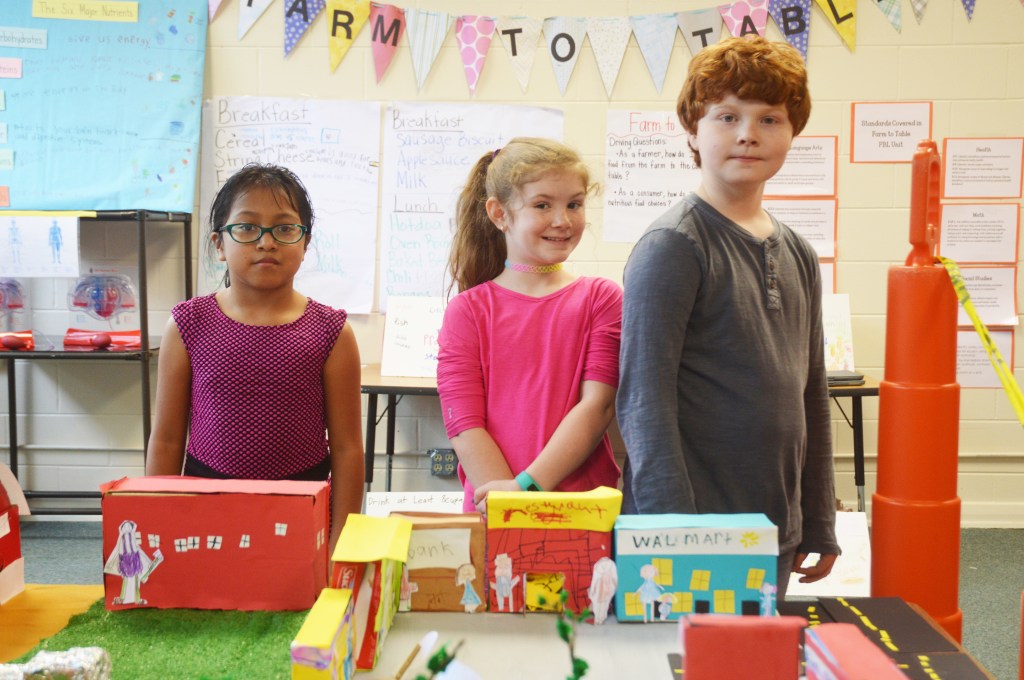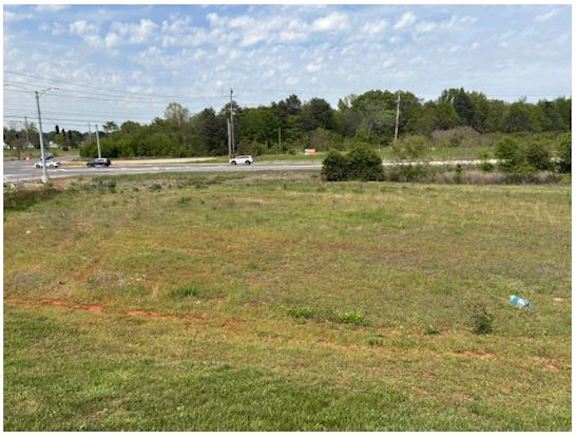FOOD FOR THOUGHT: Students excited to learn with PBL units
Published 6:45 am Tuesday, March 12, 2019

- From left, second-graders Nancy Castro, Sofia Worthey and James Collier stand Monday by a model representing the journey milk and eggs take from the farm to the dinner table. Students at HEART Academy at Julian Newman used shoe boxes, paper and glue to create grocery stores and farm buildings as part of the art component of a project-based learning unit focused on food and nutrition.
Even though they’re still in the first year, teachers at HEART Academy at Julian Newman say they’ve already noticed the excitement in students as they take on new themed lessons in school.
“We’re a health and medical academy now, so for all of our project-based learning units, we try to plan them to involve health and medical,” said Dana Downs, who teaches second grade.
Trending
For second-graders, that meant a farm-to-table project that showed students the nutrients found in their food and how their food gets from the farm to the dinner plate. The project took three weeks and incorporated science lessons on nutrition, math problems with a farming theme, finding nouns and verbs in sentences about food and creating Google Slides projects about what they’ve learned.
Even lunchtime gave an opportunity to learn, as students photographed their meal and identified which foods provided protein, carbohydrates, vitamins and more.
“And then the community outreach, we took those six nutrients, and they’re bringing in foods for the food bank,” Downs said. “They’re choosing foods based on their nutritional value, not just things in the cabinet they don’t want anymore … and sorting them into boxes.”
When it came to art, the kids created models of what they learned. Clay and paint became cows and chickens, while shoeboxes and paper became grocery stores and farm buildings. Now a room at the school features a large model of the process from farm to table.
“It starts with the cows making milk and the chickens laying eggs,” second-grader Cade Pettey said. “A big truck takes all of that stuff. The milk is taken to a creamery so it can be more healthy and then after the creamery, they ship it all to the stores and just leave it for customers to buy.”
There might be a few steps missing from this route, but teachers say the excitement and inspiration isn’t.
Trending
“They’re definitely excited, and usually when kids are excited about it, they learn and they want to learn,” Amy Smothers said.
“Many times, they go over and beyond what we ask of them because they get so carried away researching and trying to find more information,” Downs said.
The units also inspire kids to work together.
“There’s a lot of collaboration involved in these units. They have to learn to collaborate together to pull some of these things together,” Denise Pettey said. “We give them a learning target with success criteria, certain things they have to keep referring back to, to know their project.”
Some of them are finding that information at home, too. While second-grader Sofia Worthey used her iPad to share what she learned about milk being tested before it’s sold, classmate James Collier said he already knew some of what his classes covered because he lives on a farm.
“We have goats and that sort of stuff,” Collier said. “I think it’s two boys and a bunch of girls.”
Still, Downs said the students love learning through themed PBL units because they get to do so many things.
“They’re so inspired to learn, and that’s what we want,” Downs said. “If they are inspired to learn, they will spend a lifetime learning. … To me, that’s what these PBL units do. They inspire them to learn.”





